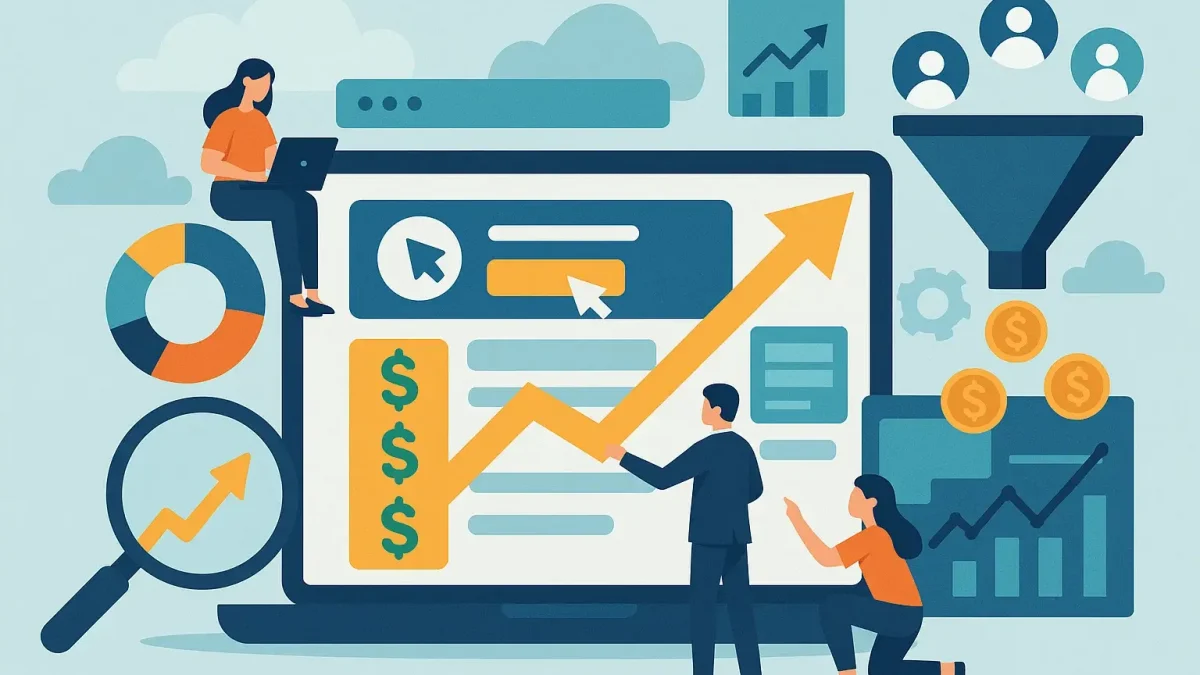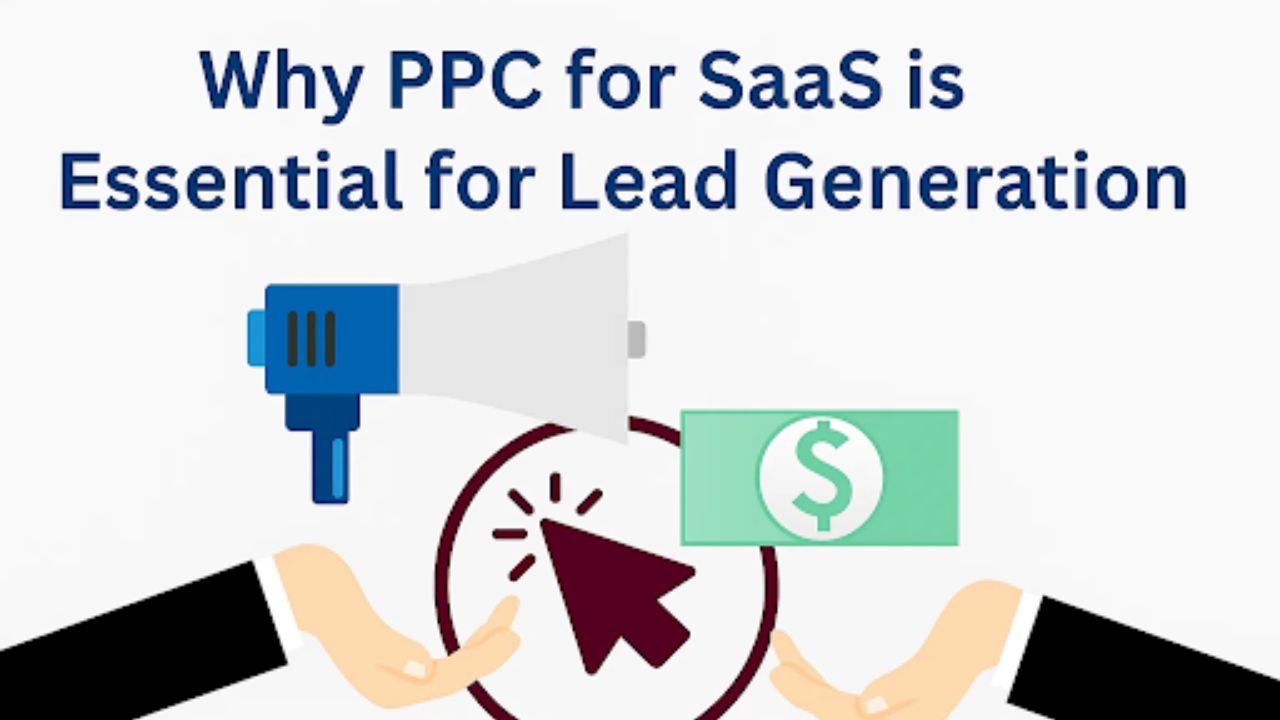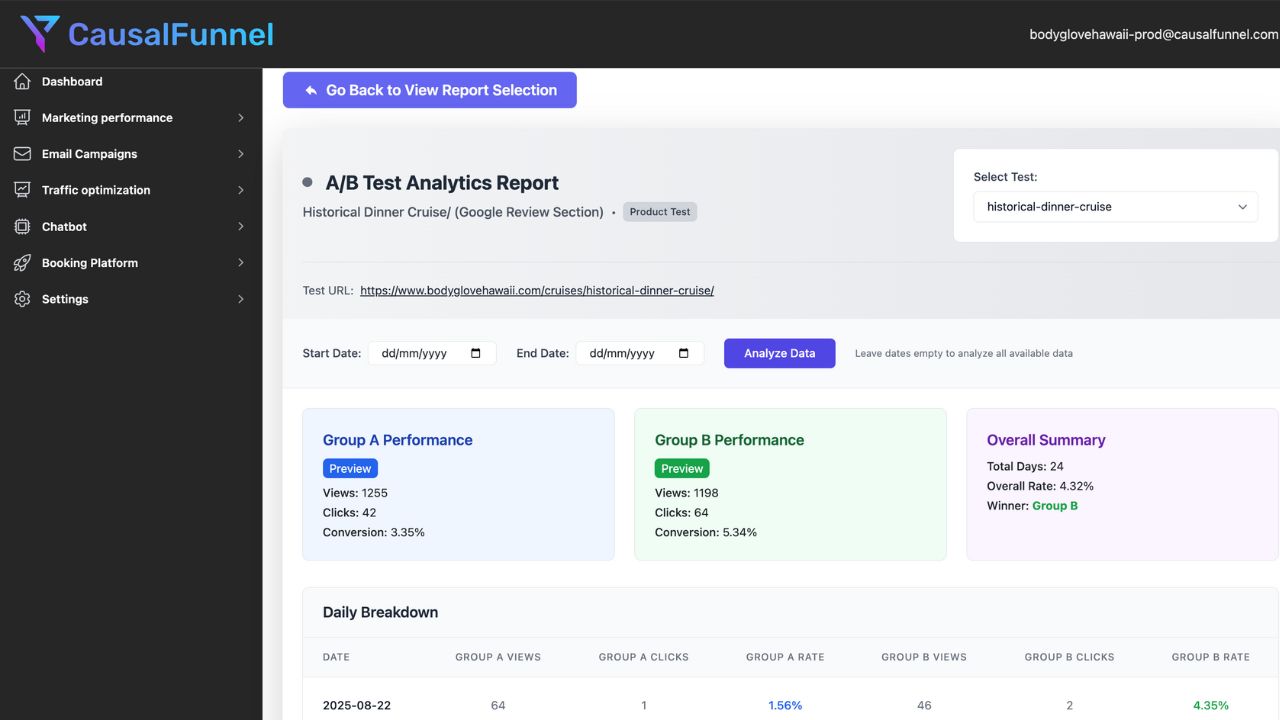
In today’s competitive SaaS landscape, PPC advertising has become one of the strongest key elements that drive growth and qualified leads. Unlike traditional marketing methods, SaaS PPC campaigns are built to reach decision-makers at the right moment in their buying journey.
With rising ad costs, longer sales cycles, and smarter competition, companies need data-driven strategies to stay ahead.
The following key statistics reveal why PPC is now essential for SaaS businesses looking to generate consistent leads, reduce acquisition costs, and accelerate revenue growth.
Key Statistics:
The SaaS advertising world changed dramatically in the past two years. Rising costs and smarter competition make every dollar count more than ever.
Three major shifts happened:
Google Ads now costs 35% more than in 2023 for most SaaS keywords. LinkedIn advertising prices jumped even higher for B2B targeting options.
But smart companies adapted quickly. They focus on high-intent audiences instead of broad targeting. They use AI tools to optimize campaigns automatically every day.
The winners in 2025 combine human strategy with machine learning power. They don’t rely on just one platform for all their leads.
PPC for SaaS works best when you understand your specific market conditions. Generic approaches fail because SaaS buyers behave differently than regular consumers.

PPC for SaaS means paying for ads that target software buyers specifically. You bid on keywords that your ideal customers search for online.
Unlike regular advertising, SaaS PPC focuses on longer sales cycles. Your ads need to educate buyers and build trust over time.
Here’s the simple process:
Popular platforms include:
Each platform charges different rates. Google Ads averages $2-8 per click. LinkedIn costs $3-12 but reaches executives directly.
Proactive Lead Generation and Quality
SaaS buyers are busy executives who rarely browse aimlessly online. They search with specific problems in mind and expect quick solutions.
This is where PPC for SaaS helps you grow. Paid campaigns give you unmatched control over timing, audience, and placement. Instead of waiting months for visibility, your solution appears instantly when prospects are actively searching. You decide which keywords, demographics, and platforms matter most, ensuring your ads reach decision-makers with intent. Unlike slower marketing channels, PPC ensures your message meets the right people at the right time, accelerating lead quality and volume.
Key Advantages of PPC for SaaS Lead Generation
That said, many SaaS companies balance PPC with organic strategies. While PPC delivers immediate visibility, organic traffic tools help uncover untapped keyword opportunities, strengthen domain authority, and build long-term growth.
For example, if a XYZ SaaS team runs PPC campaigns targeting high-intent phrases such as “enterprise project management software” while using AI-powered SEO tools to identify related organic terms like “project management workflow tips,” they can also implement custom nudges to guide prospects through the funnel.

These nudges may include personalized email reminders, targeted pop-ups, or dynamic content recommendations based on user behavior.
This way, the paid ads generate immediate leads, the organic keywords attract decision-makers earlier in the buying journey, and the custom nudges increase engagement and conversion rates. Beyond keyword intelligence, organic SEO tools also support technical audits, EEAT alignment, content templates, and scalable backlink acquisition.
These features ensure that organic campaigns not only complement PPC but also create a sustainable funnel that delivers consistent traffic, authority, and conversions over time.
The paid ads drive instant leads, while organic keywords nurture decision-makers earlier in the funnel.
Customer lifetime value (CLV) is critical in SaaS. One customer paying $500 monthly for 24 months generates $12,000. You can afford to spend $1,200 acquiring this customer.
PPC leads perform better because:
SaaS PPC lead generation campaigns focus only on qualified prospects, improving conversion rates and customer retention significantly.
SEO rankings can drop overnight when algorithms change, risking traffic losses. PPC campaigns, however, give consistent control over lead generation. Budgets and targeting can be adjusted based on performance data.
Additional benefits include:
Most SaaS companies make targeting mistakes that waste their budgets. They either go too specific or too generic.
Narrow targeting problems:
Broad targeting creates different issues:
The solution is strategic balance. Start with specific audiences and expand gradually. Test different targeting combinations and measure results carefully.
“Our cost-per-click is too high!” This complaint shows up in 80% of failed SaaS campaigns.
Many teams panic and pause campaigns before algorithms learn. This stops optimization before it really begins.
Here’s what actually happens: Ad platforms need 1-2 weeks to understand your audience. Initial costs seem high during this learning period.
Smart approach:
PPC Tips for SaaS: Patient campaigns almost always outperform impatient ones.
AI writing tools can create decent ad copy quickly. But SaaS buyers need more than decent to take action.
Your creative assets include:
High-level executives notice poor design and generic messaging immediately. They compare your ads to enterprise-level competitors.
Investment in quality pays off:
Google uses quality scores to determine ad costs and positions. Higher scores mean lower costs for the same results.
Four factors affect your quality score:
Most failed campaigns ignore these factors completely. They focus only on bidding strategies and budgets.
Improvement steps:
Negative keywords prevent your ads from showing for irrelevant searches. Without them, you waste money on clicks that never convert.
Common examples for SaaS companies:
Implementation strategy:
Vague goals like “get more leads” guarantee campaign failure. You need specific, measurable targets for every campaign.
SMART goal example: Increase free trial signups by 40% in 90 days. Keep cost-per-acquisition under $150 per trial signup.
Essential KPIs to track:
Link PPC goals directly to business revenue targets. This makes budget approval and scaling decisions much easier.
In SaaS, you sell to people inside companies. Not the companies themselves.
Research process:
Create three audience segments:
Each segment needs different messaging approaches. Hot leads want pricing and demos. Warm prospects need comparison information and case studies.
Start with tools like:
Four keyword categories for SaaS:
Focus on commercial intent keywords first. These drive better results than informational searches for immediate ROI.
Google Ads works best for:
LinkedIn Ads excel at:
Facebook Ads help with:
Budget allocation suggestion:
Start with one platform and scale successful campaigns first.
Winning ad structure:
Copywriting best practices:

A/B Testing ApproachNever rely on assumptions, test everything. A/B testing means running two variations of an ad or landing page to measure which performs better. Change only one element at a time (headline, CTA, or description) to isolate impact.
For example, a SaaS campaign might test the CTA “Start Free Trial Today” against “Get Your Demo Now.” Tracking CTR and conversions reveals which message drives stronger engagement.
A/B testing tools simplify this process by automatically rotating variations, tracking results, and surfacing the top-performing version with actionable insights. This eliminates guesswork and ensures your campaigns keep improving over time.
Your landing page determines campaign success more than ad copy. Visitors decide within 3 seconds whether to stay or leave.
Essential elements:
Technical requirements:
Pre-launch checklist:
First week monitoring:
Allow learning time. Don’t make major changes for 7-14 days unless something is clearly broken.
Weekly review schedule:
Monthly optimization tasks:
Scaling decisions: Increase budgets only after campaigns show consistent profitability. Scale gradually to maintain performance levels.
Smart SaaS companies focus 70% of their budget on bottom-funnel keywords. These users are ready to buy software solutions.
High-intent keyword examples:
ROI mathematics are simple: $50 cost-per-click for demo request = higher ROI than 10 clicks at $5 each from researchers.
Implementation tips:
Traditional PPC waits for people to fill out forms. Signal-based marketing identifies buying intent earlier through behavior patterns.
Buying signals to track:
Platform setup:
Measurement approach: Track micro-conversions that lead to macro-conversions. Page views and content downloads predict future purchases.
AI tools handle routine optimization tasks much faster than humans. They analyze thousands of data points simultaneously.
Current AI applications:
Implementation strategy:
Performance benefits: AI optimization typically improves ROAS by 20-30% over manual management.
SaaS buyers research across multiple platforms before making decisions. Single-platform attribution misses the complete customer journey.
Attribution challenges:
Solution framework:
Budget optimization: Allocate spend based on true contribution to revenue, not just last-click conversions.
Google Ads captures the highest intent traffic for SaaS companies. People search when they have specific problems to solve.
Campaign types that work:
Keyword strategy focus: Target problem-solving searches rather than general industry terms. “Project management software for remote teams” works better than “project management.”
Ad extensions to use:
LinkedIn reaches decision-makers in their professional context. This platform works especially well for enterprise SaaS solutions.
Targeting advantages:
Ad format recommendations:
Cost management: LinkedIn CPCs average 3x higher than Google Ads. Focus on lead quality over quantity for better ROI.
Facebook excels at awareness campaigns and saas facebook ads lead generation through detailed interest targeting.
Audience creation strategy:
Creative guidelines:
Microsoft Advertising (Bing Ads) often provides 30-50% lower CPCs than Google Ads with similar conversion rates.
Audience characteristics:
Optimization approach:
Performance metrics that matter most:
Business impact metrics:
Calculate true ROAS: Include customer lifetime value in calculations. A $500 acquisition cost makes sense for $5,000 annual value customers.
SaaS sales cycles average 3-6 months with multiple touchpoints. Simple attribution models miss the complete picture.
Attribution model options:
Implementation steps:
Decision-making framework: Use attribution data to optimize budget allocation between awareness and conversion campaigns.
True SaaS ROI formula: (Customer Lifetime Value × Conversion Rate – Total Campaign Cost) ÷ Total Campaign Cost
Monthly optimization process:
Scaling framework:
Programmatic ad spending reached $500 billion globally in 2024. This automated buying method offers precision targeting at scale.
Benefits for SaaS companies:
Getting started:
Video ads generate 30% higher engagement rates than static images. SaaS companies use video for product demonstrations effectively.
Effective video types:
Platform strategies:
AI-powered saas paid campaigns optimize faster than human-managed campaigns. Machine learning identifies patterns humans miss completely.
Current AI applications:
Implementation approach: Start with platform-native AI features before third-party tools. Google Smart Bidding and Facebook automated rules work well.
iOS privacy updates and cookie deprecation change how PPC targeting works. First-party data becomes more valuable than third-party sources.
Adaptation strategies:
Future preparation: Invest in first-party data collection systems now. Companies with strong customer databases will have competitive advantages.
Interactive ads generate 50% higher click-through rates than standard display ads. SaaS companies use interactive demos successfully.
Format innovations:
Implementation considerations:
Building internal PPC expertise requires significant investment beyond salaries alone.
Essential roles needed:
Additional costs:
Total first-year investment: $300,000-500,000 including tools and training.
Specialized expertise advantages:
Selection criteria:
Cost analysis: Agency fees typically range from $5,000-25,000 monthly. This includes strategy, management, and reporting services.
Choose in-house when:
Choose agency partnership when:
What is PPC for SaaS and how does it work?
PPC for SaaS means paying for ads that target software buyers. You bid on keywords related to your solution. When people search those terms, your ads appear above organic results.
Which PPC platforms work best for SaaS companies?
Google Ads works best for capturing search intent. LinkedIn excels at reaching B2B decision makers. Facebook helps with awareness and retargeting campaigns. Most successful SaaS companies use 2-3 platforms together.
What budget should SaaS companies allocate to PPC?
Start with 15-25% of your total marketing budget for PPC campaigns. Test with smaller amounts first. Scale spending based on positive ROI results and lead quality.
How long does it take to see results from SaaS PPC campaigns?
Expect initial data within 2-4 weeks. Meaningful optimization takes 60-90 days. Full campaign maturity happens after 6 months of consistent testing and improvement.
What are the most important metrics to track in SaaS PPC?
Focus on cost-per-acquisition (CPA) and customer lifetime value (CLV) ratios. Track conversion rates from leads to customers. Monitor return on ad spend (ROAS) monthly.
How do you calculate ROI for SaaS PPC campaigns?
Include customer lifetime value in ROI calculations. Divide total customer value by acquisition cost. SaaS companies should aim for 3:1 CLV to CAC ratios minimum.
Should SaaS companies manage PPC in-house or use an agency?
Agency partnerships work better for companies spending under $300,000 annually. In-house teams make sense for larger budgets with specialized requirements. Consider hybrid approaches for flexibility.
What are the biggest mistakes in SaaS PPC campaigns?
Targeting too broadly wastes budget on irrelevant clicks. Pausing campaigns too early prevents algorithm optimization. Ignoring mobile optimization loses 60% of potential traffic.
There’s tons of competition in today’s SaaS landscape, where PPC for SaaS is no longer optional, now it has become a necessity that can help you with consistent lead generation, higher conversion rates, and accelerated revenue growth.
SaaS can help you capture high-intent customers by targeting decision-makers at the right moment in their buying journey that could also involve scaling campaigns efficiently. While maintaining market resilience even amid fluctuating SEO rankings or industry competition.
If you have a well-planned SaaS PPC strategy that combines precise audience targeting, compelling ad creatives, and continuous optimization through A/B testing and performance tracking. Integrating PPC with organic SEO campaigns further can strengthens long-term growth, driving both immediate leads and sustained visibility.
Tools for AI-powered optimization, multi-channel attribution, and signal-based retargeting ensure campaigns stay adaptive, measurable, and highly effective.
The benefits are clear: higher-quality leads, faster sales cycles, and improved customer lifetime value. Companies that implement bottom-funnel targeting, leverage programmatic and video advertising, and maintain data-driven campaign management gain a competitive edge in 2025 and beyond.
Empowering businesses to optimize their conversion funnels with AI-driven insights and automation. Turn traffic into sales with our advanced attribution platform.



